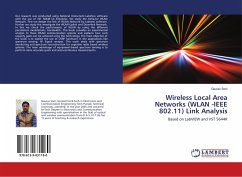High Quality Content by WIKIPEDIA articles! In computer networking, the Link Layer is the lowest layer in the Internet Protocol Suite, the networking architecture of the Internet (RFC 1122, RFC 1123). It is the group of methods or protocols that only operate on a host's link. The link is the physical and logical network components used to interconnect hosts or nodes in the network and a link protocol is a suite of methods and standards that operate only between adjacent network nodes of a Local area network segment or a wide area network connection. Despite the different semantics of layering in TCP/ IP and OSI, the Link Layer is often described as a combination of the Data Link Layer (Layer 2) and the Physical Layer (Layer 1) in the Open Systems Interconnection (OSI) protocol stack. However, TCP/ IP's layers are descriptions of operating scopes (application, host-to-host, network, link) and not detailed prescriptions of operating procedures, data semantics, or networking technologies. RFC 1122 exemplifies that local area network protocols such as Ethernet and IEEE 802, and framing protocols such as Point-to-Point Protocol (PPP) belong to the Link Layer.
Bitte wählen Sie Ihr Anliegen aus.
Rechnungen
Retourenschein anfordern
Bestellstatus
Storno








